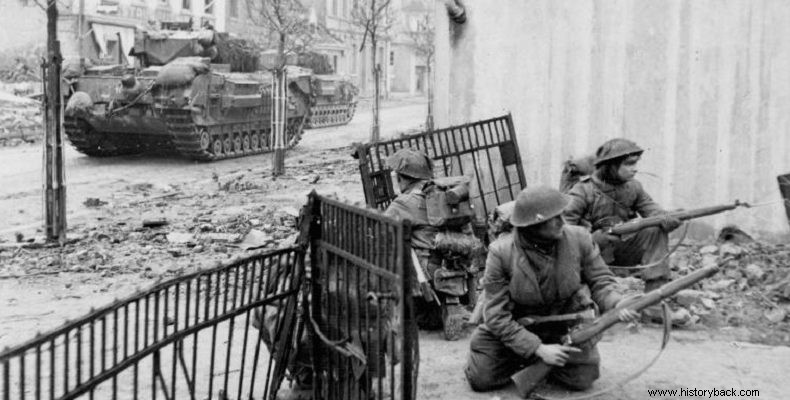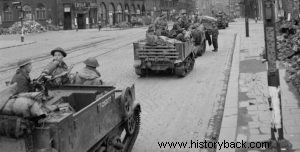
The Battle of Hamburg fought between 18 April and 3 May 1945 was one of the last of World War II, when the outcome was already decided. Nevertheless, it was given stubbornly by both sides.
After crossing the Rhine the Allies began to advance rapidly into German territory with the overstretched German forces disintegrating. German Army Group B (OS B) under Field Marshal Modell tried as hard as possible but was eventually surrounded in the Ruhr enclave and neutralized.
To Hamburg
The British 2nd Army, under Lt. Gen. Dempsey advanced into northern Germany without encountering particularly serious resistance. The Germans had the euphemistic 1st Parachute Army, while the Northwestern Army was being formed in the area . Of course the headlines did not match reality and the supposed armies and army groups existed only in the imagination of Hitler and his entourage.
The Germans managed to hold on for a week in Bremen . Their last line of defense was in Hamburg. The 8th Army Corps (SS) of the 2nd Army was launched against the city led by the famous British 7th Armored Division (ATD) of the "Desert Rats".
The attack was supported by the Scottish 15th Infantry Division (MP), and the 53rd MP. The 7th Infantry Division moved towards the city and on 20 April captured the small town of Daerzdorf about 12 km south of Hamburg. The British reached the south bank of the river Elbe and began to hit the German positions with their artillery.
Fehrendorf and street fights
Then they set off again and arrived,within the day, at Fahrendorf, only 3 km from Hamburg. Then the British stopped and began to organize the siege of the German metropolis. On April 26, however, the Germans, with the vanguard of the 12th SS Replacement Regiment counterattacked and recaptured Fahrendorf, driving out their opponents, supported by two assault guns and a few 88 mm guns. A fierce conflict ensued which was ultimately decided in favor of the British due to the presence of their tanks. The Germans lost about 130 men and retreated.
On 28 April the British, with the vanguard of the 5th Royal Tank Regiment, the 9th Durham Light Infantry and the 1st Rifles Brigade, advanced against the city itself. The Germans proceeded to blow up roads delaying the British advance.
When the British entered the city, the battle turned into a fierce hand-to-hand conflict from house to house. The euphemistic German 1st Parachute Army It had at that time remnants of army and SS units (several of them Hungarian nationals), a few paratroopers, Volkssturm men, navy, police, firemen and Hitler Youth.
Contrary to what the British expected, the German resistance hardened instead of relaxing. Even when the British managed to enter the city German resistance continued in the adjacent forests which the British had not managed to clear. It took a new organized operation by the British 53rd Infantry Division reinforced by the 1st Royal Tank Regiment to clear the forest south of the town and capture the approximately 2,000 fighting Germans and Hungarians.
Until the end
Nevertheless, the resistance continued even after Hitler's suicide. Hitler's successor Admiral Dainitz then ordered Wing Commander Alvin Volz to surrender the city to the British. Woltz arrived at the headquarters of the 7th Infantry Division on May 2 and the fire ceased the next day without the German defenders having been killed.
After the surrender of Hamburg those Germans who were not captured moved to the Jutland peninsula in Denmark. The British advanced without resistance to Lübeck where the end of the war found them. The Battle of Hamburg was no catalytic conflict, nor did it decide anything. However, it was given with stubbornness and fanaticism on the German side even if there was no hope, to the extent that it even won the appreciation of the victors.
The Germans involved about 3,000 men in the battle, of which few managed to escape. The British engaged three divisions. Their losses are not exactly known.

British Carrier in Hamburg.
